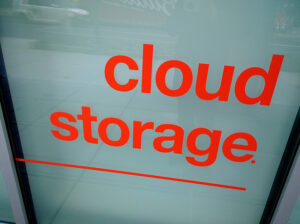Nexus Redefined: The Click-Through Model

As more of our marketplace goes virtual, and as we purchase fewer “hard items” for things like reading, entertainment, software (think e-readers, i-tunes, and SaaS models), thereby further shrinking the tax base, cash-strapped states continue in their clever attempts to raise revenue. One tactic that has been expanding into more states over the years is something called “click-through” nexus and its companion “affiliate nexus”. The idea behind these laws challenges the traditional thinking about what it means to have physical presence in a state, and makes it easier for states to require companies to collect sales tax on sales to customers within the state. More states are enacting these types of statutes, partially as a stop gap measure to fill the hole left both by the changing marketplace and by Congress’s inability to pass a comprehensive sales tax reform bill such as the proposed Marketplace Fairness Act. Read more
California Tax Credits for Aerospace
Background:
The U.S. Air Force is looking for a partner for their Advanced Strategic Aircraft Program, a deal worth $55 billion. They are looking to buy up to 100 stealth bombers. In the mix for this deal are Northrop Grumman Corp. and Boeing Co. conjointly with Lockheed Martin Corp. California, seeing the benefits this could provide the state, has approved bills in regards to tax credits and incentives for the corporation that the U.S. Air Force ultimately chooses to form a contract with.
Assembly Bill 2389 & Senate Bill 718:
Initially on July 10, 2014 Governor Brown approved Assembly Bill 2389, which contains two portions that can save potentially up to $420 million in tax breaks for a qualified employer. The first portion relates to the Capital Investment Incentive Program (CIIP), a program formed in 1999 to attract large manufacturing facilities by offering 15 years of property tax rebates. This was previously applicable to a broad range of manufacturers, but is being temporarily narrowed down to North American Industry Classification System (NAICS) codes 3364 (Aerospace Product and Parts Manufacturing) and 3359 (Other Electrical Equipment and Component Manufacturing).
The second portion is more specifically for the actual contract with the U.S. Air Force. It’s an aerospace income tax credit of 17.5% of qualified wages paid or incurred to qualified full-time employees. In order for employees to be qualified they must spend 80% or more of their time working on the advanced strategic aircraft program. However, AB 2389 stated that the employer/taxpayer is a “subcontractor with regard to the manufacture of that aircraft.”
Under that definition, the only “subcontractor” that would qualify for the aerospace tax credit is Lockheed Martin since Northrop Grumman is a prime contractor. Northrop Grumman, the largest aerospace/defense employer in California, complained about favoritism and that it would put them at a disadvantage for winning the contract. However, it appeared as though the government wasn’t aware of the corporation’s interest in this deal until last minute. Consequently, Senate Bill 718 was passed on August 15, 2014. This expanded the bill to include prime contractors, thus creating a fairer playing field for both parties. Only one of these corporations will qualify for the aerospace tax credits and it is contingent upon who receives the contract with the U.S. Air Force and if they build the bombers in California.Read more
Tax Credits & Incentives: Understanding Their Importance
 Tax credits and incentives are back in the news. California automaker Tesla is in talks with five states to build a new, ten-million-square-foot factory. The battery plant will cost $5 billion to construct and will create an estimated 6,500 jobs. It's easy to see why so many states are playing the role of suitor. In this post we'll take a look at the power of tax credits and incentives plus we'll examine California's chances of landing the new Tesla contract.
Tax credits and incentives are back in the news. California automaker Tesla is in talks with five states to build a new, ten-million-square-foot factory. The battery plant will cost $5 billion to construct and will create an estimated 6,500 jobs. It's easy to see why so many states are playing the role of suitor. In this post we'll take a look at the power of tax credits and incentives plus we'll examine California's chances of landing the new Tesla contract.
The Power of Tax Credits and Incentives
Tesla is a good case study to understand the significance of tax credits and incentives. The five states in the running (California, Nevada, Arizona, New Mexico and Texas) are all offering something to attract the car maker. The exact details are closely guarded but these types of deals typically involve breaks on everything from tax credits based on the number of employees hired to income tax or sales tax credits for purchases of equipment, and property tax reductions or abatements. Oftentimes the negotiated incentives also include promised assistance with infrastructure.Read more
Focus on Nevada
 Miles Consulting continues to help clients in other states, so this week we dedicate some time to Nevada.
Miles Consulting continues to help clients in other states, so this week we dedicate some time to Nevada.
Business Climate:
Nevada conjures up images of bright lights, gambling, and other entertainment. But we’re blogging about state taxes! According to the 2014 State Business Tax Climate Index, Nevada ranks very favorably due to an absence of several taxes. Some of the taxes not levied include individual income tax, franchise tax, and corporate tax. Nevada also offers many credit and incentives programs that attract employers to increase their workforce. The combination of low taxes and incentives makes Nevada a hot spot for new and existing businesses. Companies like Amazon and Urban Outfitters elected to create fulfillment centers in the Northern Nevada area for these very reasons. The geographic location of Nevada is still within close proximity to California markets without the burden of a high tax structure.
Key industries within the state include manufacturing, aerospace/defense, mining, tourism, gaming, and hospitality. As of 2014, there are roughly 381,800 jobs within the tourism & gaming industry. Nevada is an ideal location for manufacturing due to its proximity to ports in California. The industry currently has over 1,800 manufacturing companies which employ over 56,000 residents of Nevada. The state-wide unemployment rate in April 2014 was 8.0% and has been decreasing due to the addition of 42,700 private sector jobs added within the first four months of 2014.Read more
Sales Tax Issue Heads to the Supreme Court

This fall the United States Supreme Court will add its opinion to the online sales tax debate. The court has agreed to hear a case challenging Colorado's "Amazon Tax." The 2010 law requires online retailers located outside the state to notify consumers of the state sales tax they would owe on purchases. Not only that, the law required these companies to turn over customer names to the state so that the state could enforce the remittance of self-assessed use tax. The Direction Marketing Association [DMA] challenged the law on the basis it violated a consumer's right to privacy.
The "Amazon Tax"
One of the more interesting aspects of this legislation concerns how sales tax is collected. The Colorado law doesn't ask out-of-state companies to collect sales tax, but it does require them to report the names, address and total annual purchases. This is a pretty clever way (read “Big Brother”) of charging an online sales tax – albeit in a roundabout way. A federal district court sided with DMA on the grounds that the notice and reporting aspects of the law violated the Commerce Clause of the Constitution. The 10th Circuit Court of appeals later overturned this decision.Read more
CA Manufacturing Exemption - Regs Final
 The California Manufacturers’ Sales/Use Tax Exemption allows certain manufacturing and biotech companies (within NAICS codes 3111 to 3399, 541711, or 541712) to claim a partial exemption from sales and use tax on purchases of manufacturing and research and development (R&D) equipment. The partial exemption rate is 4.1875%.
The California Manufacturers’ Sales/Use Tax Exemption allows certain manufacturing and biotech companies (within NAICS codes 3111 to 3399, 541711, or 541712) to claim a partial exemption from sales and use tax on purchases of manufacturing and research and development (R&D) equipment. The partial exemption rate is 4.1875%.
Regulation Finalized
On July 17, 2014 the California State Board of Equalization (BOE) adopted a regulation to implement the California Manufacturers’ Sales/Use Tax Exemption. The law and related regulation applies to equipment used primarily (greater than 50% of the time) in manufacturing or research and development. This regulation further clarified the Board’s view of the types of businesses and purchases that qualify for the exemption which took effect on July 1, 2014.
The Regulation discusses specific areas that might be of interest to our clients, including:
- Qualifications of an “establishment” within a business that might not be in a primarily qualified NAICS code.
- Definition of “qualified property” including special purpose buildings.
- Special rules for construction contractors.
Soda and Sin Tax
Soda is on the ballot this fall. Berkeley residents will get a chance to vote on a proposed 1-cent-per-ounce tax on sugary drinks in November. The "soda tax" is essentially an excise tax designed to limit consumption. The big question is: do they work? In this post we'll take a look at the rationale behind this type of excise tax and whether or not they're effective.

Sin Tax
This form of excise tax has a more diabolical name – “sin tax.” As the moniker implies, a sin tax is placed on something deemed socially offensive. Cigarettes, alcohol and gambling fall into this category. Soda made it on the list because of the current obesity epidemic plaguing the United States. The traditional belief held that the more expensive a product or service, the less likely it would be purchased. The current thinking focuses more on the impact felt by others. A good example is taxing cigarettes because of the risks associated with second hand smoke.Read more
Update on CA Competes Tax Credit
Background
As previously discussed in this blog the California Competes Tax Credit is a new income tax credit for which companies submit applications to the state detailing increased investment in California. The submissions are vetted by a five member panel. On June 19th, a committee meeting of the Go-Biz board (representing the Governor’s Office of Business and Economic Development) was held in Sacramento to approve and announce those companies receiving their share of the first $30 million in tax credit available for the fiscal year ending June 30th, 2014. A total of 31 companies will receive a share of the $30 Million, out of almost 400 companies, who requested approximately $500M in credits. Thus, the "winners" were truly an elite group.
The new fiscal year for this credit began July 1st and the total amount of credit allocated has jumped up to $150 million! No more than twenty percent of the credit may go to any one applicant per fiscal year. Again, twenty-five percent of the $150 million will be reserved for small business. There are multiple phases of the application evaluation which is performed by a set group of Go-Biz administrators.
The first phase is based on a formula where the amount of tax credit requested by the applicant is compared to the applicant’s proposed new full-time employee compensation and capital investment commitments. Applicants who sent letters certifying they were at risk of reducing the number of employees in California absent the credit were automatically moved to the second phase of evaluation. The remaining applicants were ordered from lowest to highest based off the compensation versus employee compensation plus capital investment ratio. Ratios within the top 200% were then moved to the second phase of evaluations as well.Read more
Goods, Services and the Cloud

On its surface, the cloud is a relatively simple idea…except where sales taxes are concerned. Individuals and businesses use the cloud to access programs or store data via the Internet. There is usually no tangible property or service you can physically hold, nor can these materials be downloaded. However, you can often use them as you would previously have used the tangible version (i.e. digital music vs. a CD or software off the shelf vs. software as a service (“SaaS”) and that's where this issue gets complicated. The cloud challenges standard definitions of property and raises serious questions about taxation, both for sales tax and income tax.
Good or Service?
Say you purchase the use of “software” from a cloud provider for use in your business. Does it count as a tangible good even though the traditional rules don't apply? A key component of personal property is whether or not the item can be touched or otherwise “perceived by the senses.” For instance, a house is real estate, a car is personal property. These are important distinctions because classification determines what kinds of taxes apply. The water only gets muddier when you consider how the software is accessed. Chances are your business uses some form of cloud hosting service. Does this make the good a service? This is an argument that will need to be addressed as more and companies move toward cloud commerce. Read more
Focus on Oregon - Taxes and Tax Credits
Miles Consulting continues to help clients in many states, so this week we dedicate some blog time to Oregon. (Photo credit - M. Miles at Mulnomah Falls, OR.)
Business Climate:
Oregon is one of the few states without sales or use tax. However, they make up for it by being the third highest in the nation for personal income taxes. Yet, Oregon ranks 12 out of 50 states with the most favorable tax climate. The unemployment rate in Oregon was 6.9 percent in March compared to the national rate at 6.7 percent. Major Oregon industries include advanced manufacturing, clean technology, forestry/wood products, high technology, outdoor gear and activewear. (Oregon is home to Nike, Columbia Sportswear, and Adidas)
Oregon has one of the most aggressive renewable energy policies in the nation. The state’s standard requires that electric utilities must meet at least 25% of their Oregon load with renewable energy by the year 2025. Virtually all of Oregon’s electric load growth must come from new renewable energy. The standard also provides a goal that at least 1/3 of these targets be met by resources smaller than 25 megawatts in size. Solar energy counts double towards meeting the targets.
Taxes:
Oregon is one of just five states without a sales or use tax. (The other states are Alaska, Montana, New Hampshire, and Delaware.) Personal income tax rates in Oregon range from 5 percent to 9.9 percent. In comparison, New York ranges from 1 to 8.82 percent and; California ranges 1 to 13.3 percent. Oregon collects a corporate income/excise tax of 6.600 to 7.600 percent based on gross taxable income.Read more















